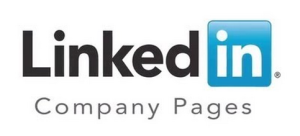 The low hanging fruit for ambassadorship is Employee Advocacy and yet many (not to say most) companies are failing miserably at it.
The low hanging fruit for ambassadorship is Employee Advocacy and yet many (not to say most) companies are failing miserably at it.
Why and what to get it on the rails of for many one of the burning questions on the table.
4 golden rules for Employee Advocacy and Sharing
When it comes to Employee Advocacy there are 4 golden and simple rules:
- You employees follow your company accounts
- There is a culture of sharing
- The WIIIFM factor (for the employees) of posts is high
- Content is generated by the employees
Let’s take a look at the above rules and answer the question of why and what
Employees follow corporate accounts

This seems so obvious but it is not. Sometimes because companies have not asked, sometimes because of ignorance and even sometime because employee choose not to. Few companies take the time to promote their own social accounts internally even though externally thousands of dollars/euros are spent to get followers/fans. Companies assume employees will find and follow the accounts anyway. But how do you expect your employees to look for them and even going one step further to share from there.
Why not run an internal campaign to promote social media accounts and content as first step to true Employee Advocacy?
Sharing culture

It must be said that some people and even nations share more than others. Us Belgians are renounded for not sharing. Sharing must be encouraged (via the social media policy) and done by example. The management team and the social media lead by example for the rest of the organization to follow. How do you expect employees to share what management and others do not share themselves.
Social media usage (also for private reasons during worktime) must be encouraged but forced upon your employees.
Oh by-the-way, the corporate account might want to share some of the content posted by its employees and this without being told to do so.
WIIIFM

People share if the content they share makes them look good of entertaining to their audience, friends, fans and followers. As a company post creator you should keep that in mind and not the promotion of company products and/or services. Most company post do not hold the potential for people to share and look good!
User-Generated Content
 Sharing is a 2-way process and successful posts have a high level of human factor embedded in them. Showing off your employees (and no, they will not be stolen away from you) and their content will make sharing so much more attractive. One step further is using content from your employees on your corporate account will dramatically increase even more the level of sharing. See it as a pat on the back and recognition for having great content.
Sharing is a 2-way process and successful posts have a high level of human factor embedded in them. Showing off your employees (and no, they will not be stolen away from you) and their content will make sharing so much more attractive. One step further is using content from your employees on your corporate account will dramatically increase even more the level of sharing. See it as a pat on the back and recognition for having great content.
And then there are tools
Since Employee Advocacy is seen as the golden egg, companies are looking for ways to make it hatch faster. Here come the tools to help (aka“force”) the sharing actions. These tools even come with incentive programs (gamification) to make sharing even more attractive. But gamification will only work so long. In my humble opinion no longer than 3 to 6 months. And yes, internal promotion will be required. Let me clear these tools have their role to play and are a good way to kick start social sharing of company posts but they are no longtime cure. There are a lot of great tools out there to help you with social sharing and employee advocacy.
However, the real cure lies in adhering to the above 4 rules to make Employee Advocacy a success!
Feel free to agree of disagree with me and sharing this in the comment field below.





